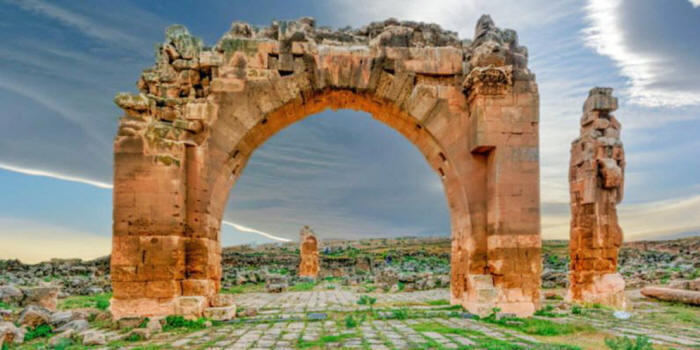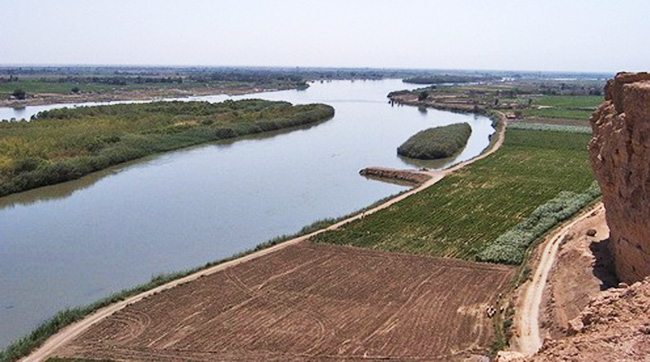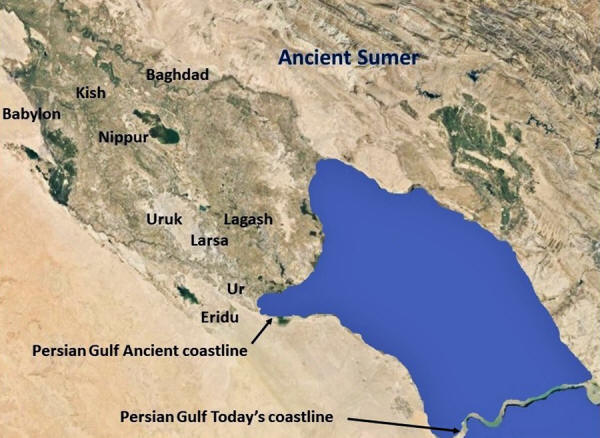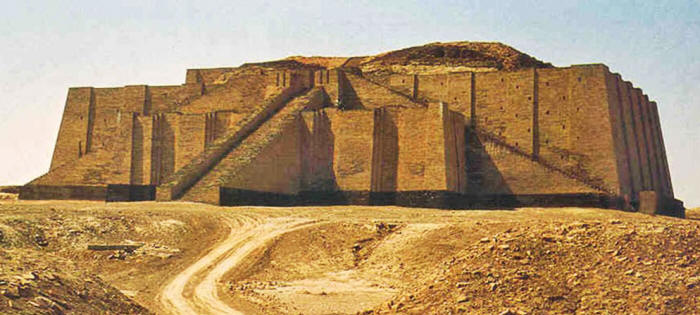|
by Michael C. Anderson Ruins of the ancient city of Harran in Mesopotamia
Their cultural and political influence provided a foundation for modern society and its political frameworks inspired post-Enlightenment governments.
The accomplishments of Greece and Rome cast a long shadow over their predecessors.
That line of thinking is a serious mistake because Mesopotamia was one of the most important civilizations in all of human history.
It was the world's first true civilization, making it the father of all cultures in the West.
Tigris River
To simplify the story, we will focus our discussion on Sumer, arguably the most important of the Mesopotamian cultures.
The term Sumer refers to,
This is the place that gave rise to one of the world's great ancient cultures.
At the time when Sumer was established (6500 BC), the Persian Gulf extended farther north than it does today.
The Ubaidians were the first to exploit the alluvial plain of Sumer and build a civilization between the great rivers.
Excavated remains from the period include hoes, adzes, and knives, along with clay artifacts such as sickles, bricks, loom weights, figurines, and painted pottery.
Together, these artifacts provide a record of stunning accomplishments for a people who predated the Greeks by 4,000 years.
By 3800 BCE, the Sumerian civilization had reached its peak.
They were the largest-known structures built by man at the time and represent the power and sophistication of the great Sumerian cities. The Sumerians believed the gods resided in their temples and so they prohibited the public from entering their sanctuaries.
The ziggurat also contained separate structures for grain storage, recalling the time when Sumerian cities were theocracies, and the priests served as municipal administrators in addition to their religious duties.
Uruk seems to have been the cultural centre of Sumer because it housed the principal monuments of the region and exhibited the most obvious traces of an advanced urban society.
By 3500 BCE, the world's first system of writing had been developed and Uruk exerted influence over the entire Near East.
The written form of the Sumerian language, Cuneiform, was developed through the evolution of representative characters (pictograms) into non-representative forms.
Although it lacked mineral resources and its climate was arid, the region had undeniable geographic and environmental advantages, including a vast delta with a flat region transected by waterways.
This vast area of cultivable land allowed easy transit by river or land. Sumer became a highly populated and urbanized region by 3500 BCE, with a social hierarchy, an artisan economy, and long-distance commerce.
These cities featured centralized administrations that employed specialized workers. It was during the Uruk period that Sumerian cities began to make use of slave labor, of which there is ample evidence from written texts.
The center of Sumerian culture remained in southern Mesopotamia, even though rulers soon began expanding into neighboring areas. Local Semitic groups adopted much of Sumerian culture.
As the Epic of Gilgamesh shows, this period was associated with increased war. Cities became walled and increased in size, and undefended villages in southern Mesopotamia disappeared.
Both Enmerkar and Gilgamesh are credited with having built the walls of Uruk.
Akkad and its capital Agate were located to the north of Sumer, just beyond Kish. The Akkadian Empire is considered the first empire in human history. Sargon's rule expanded to include the territory from the Persian Gulf to Cyprus, but his empire proved to be unstable and collapsed after two hundred years.
The 3rd dynasty of Ur under Ur-Nammu and Shulgi was able to extend its power northward into Akkadian territory, but Ur III only survived for 100 years before being absorbed into the growing Babylonian Empire.
By then, the region had become more Semitic than Sumerian, with the resurgence of the Akkadian-speaking Semites in Assyria and elsewhere.
The Sumerian language continued as a sacerdotal language taught in schools in Babylonia and Assyria, much as Latin was taught in the Medieval period.
Poorly drained irrigated soils, in an arid climate with high levels of evaporation, led to the buildup of dissolved salts in the soil, severely reducing agricultural yields over time.
During the Akkadian and Ur III phases, there was a shift from the cultivation of wheat to the more salt-tolerant barley, but this change was ineffective.
From 2100 BCE to 1700 BCE, it is estimated that the population of Sumer declined by nearly three fifths.
From that point on, Sumerian would survive as a literary and liturgical language.
These accomplishments place them beside Greece and Rome in the pantheon of the world's great ancient civilizations.
|






